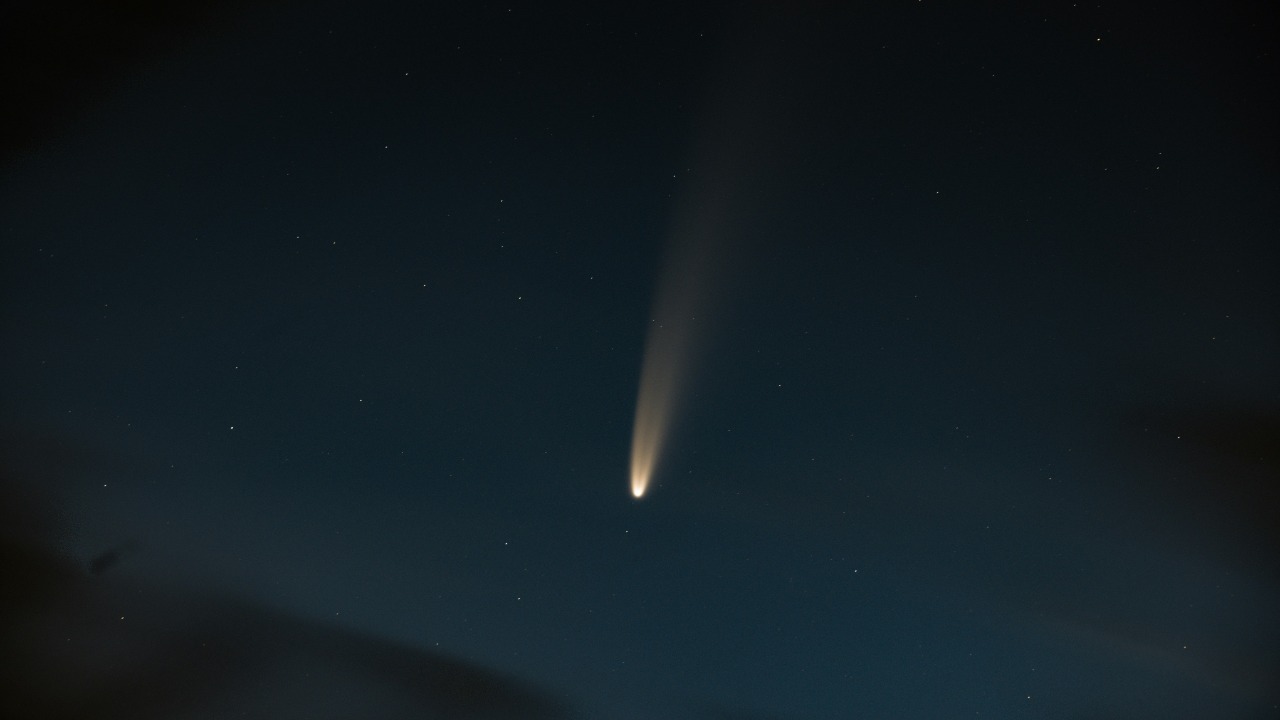
Comet Lemmon, a dazzling celestial visitor, recently captivated astronomers as its tail was temporarily shredded by solar wind. This dramatic event, observed on October 21, 2025, highlights the dynamic interactions between comets and the Sun’s energetic particles. Such phenomena offer a rare glimpse into the volatile environment of space near our star, providing valuable insights into the behavior of these icy wanderers.
Discovery and Characteristics of Comet Lemmon
Comet Lemmon’s journey through our solar system has been nothing short of spectacular. Initially detected by astronomers due to its superbright appearance, the comet quickly became a focal point for both professional and amateur skywatchers. Its luminous display is attributed to its composition, which includes an icy nucleus surrounded by a coma of gas and dust. These elements not only contribute to its brightness but also play a crucial role in its behavior as it interacts with solar forces.
The comet’s visibility is further enhanced by its specific orbital path, which brings it close enough to the Sun to be affected by its radiation and solar wind. This proximity allows observers to study its characteristics in detail. According to reports, Comet Lemmon’s brightness level has been a key factor in its widespread visibility, making it an object of significant interest. For more precise data on its metrics, including its orbital path, you can refer to the detailed reports on Comet Lemmon.
The Role of Solar Wind in Comet Tails
Solar wind, a stream of charged particles emitted by the Sun, plays a pivotal role in shaping the tails of comets. When these particles collide with a comet’s atmosphere, they can cause dramatic tail disconnection events. This interaction strips away ions from the comet’s tail, leading to its temporary fragmentation. The event involving Comet Lemmon, prominently reported on October 21, 2025, exemplifies this phenomenon, illustrating the broader patterns of solar activity that influence cometary behavior.
The mechanism behind this interaction is complex yet fascinating. As solar wind particles bombard the comet, they impart energy that can dislodge particles from the tail, effectively tearing it apart. This process is temporary, as the tail often reforms once the solar wind burst subsides. Understanding these interactions is crucial for scientists studying space weather and its potential impacts on celestial bodies.
Observations of the Tail Disconnection Event
The tail disconnection event of Comet Lemmon was captured using a variety of imaging techniques, including ground-based telescopes and space observatories. These tools allowed astronomers to document the tail’s fragmentation in detail, providing visual evidence of the solar wind’s impact. The temporary nature of the disruption was evident, as the tail began to reform shortly after the solar wind’s influence waned.
Experts have provided insights into the significance of this event, noting that it offers a unique opportunity to study the interactions between comets and solar wind. The observations not only enhance our understanding of cometary dynamics but also contribute to broader research on solar wind interactions. For more on the observations and expert analyses, you can explore the detailed coverage of the superbright Comet Lemmon.
Scientific Implications and Future Monitoring
The tail disconnection event of Comet Lemmon has significant scientific implications. It enhances our understanding of how solar wind affects cometary structures and contributes to the broader study of space weather. These insights are crucial for predicting the behavior of other comets as they approach the Sun, potentially impacting their trajectories and brightness levels.
Looking ahead, astronomers plan to continue monitoring Comet Lemmon as it progresses through its orbit. This ongoing research will provide further opportunities to study the interactions between comets and solar wind, offering valuable data for future space missions and scientific endeavors. For those interested in the latest developments and research on solar wind interactions, additional information is available through ongoing studies linked to solar wind dynamics.